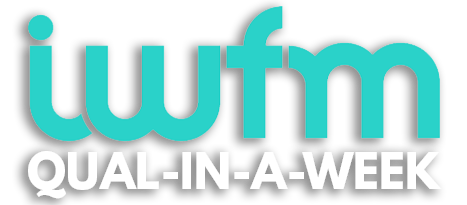Hi there,
It’s been a few weeks since the last newsletter, thanks to a combination of a bank holiday and a huge amount of other activity at Xenon Group towers.
As a result, before we get into this week’s topic we’ve got a couple of announcements to make.
Firstly, after being subject to all the typical delays that technology projects fall victim to, our new website is just about ready and should be live by the time we send out next week’s newsletter.
I know, I know – a new company website doesn’t sound like the most exciting of news – as a subscriber to this newsletter you already know who we are and what we’re all about.
However, there will be an important element of the website which will be very relevant to you, and that is a complete back catalogue of all of the newsletters we’ve sent so far, meaning you’ll be able to go back and revisit previous topics without having to wade through your inbox.
If you’ve only recently subscribed, this also means you’ll be able to get access to any topics you may have missed.
The second announcement is a bit of a teaser. We’re working on putting together something that currently doesn’t even exist in the world of FM training.
Imagine a place where you can learn about absolutely anything you need to know about facilities management and how to be a great FM, accessible from wherever you are in the world and at a price that works out less than your daily Starbucks.
That’s all I’ll say for now (I did say this would be a teaser) but we’ll be revealing more in the coming weeks.
So without further ado, let’s get into this week’s topic.
Today, we’re learning about stakeholders.
Stakeholders – who or what are they?
Simply put, stakeholder is anyone with an interest in a business. Stakeholders are individuals, groups or organisations that are affected by the activity of the business.
They include:
- Owners and/or shareholders who are interested in how much profit the business makes.
- Managers who are concerned about their salary.
- Workers who want to earn fair wages and keep their jobs.
- Customers who want the business to produce quality products at reasonable prices.
- Suppliers who want the business to continue to buy their products.
- Lenders who want to be repaid on time and in full.
- Pressure groups including the unions who have an interest in the well-being of employees and the local community
- The community which has a stake in the business as employers of local people. Business activity also affects the local environment. For example, noisy night-time deliveries or a smelly factory would be unpopular with local residents.
Stakeholders can also be classified as internal or external.
- Internal stakeholders would be groups within the business, for example, owners and employees.
- External stakeholders are groups outside the organisation, for example the local community.
So, a stakeholder then, is any person or organisation who can be positively or negatively impacted by, or cause an impact on the actions of a company. Stakeholders can be further identified as
- Primary stakeholders: are those ultimately affected, either positively or negatively by corporation’s actions.
- Secondary stakeholders: are the ‘intermediaries’, that is, persons or organizations who are indirectly affected by corporation’s actions.
- Key stakeholders: (who can also belong to the first two groups) have significant influence or importance in corporation.
Within the category of internal stakeholders, there are two distinct groups that the term ‘Stakeholder’ may refer to:
- Corporate Stakeholder: a person, group, organisation, or system who affects or can be affected by an organisation’s actions.
- Project stakeholder: a stakeholder with an interest in a project through either:
- Sponsoring a project
- Having an interest or a gain upon a successful completion of a project.
- Having a positive or negative influence in the Project Completion.
Examples of project stakeholders include the customer, the user group, the project manager, the development team, the testers, and so on.
Project stakeholders are individuals and organizations that are actively involved in the project, or whose interests may be affected as a result of project execution or project completion. They may also exert influence over the project’s objectives and outcomes.
The project management team must identify the stakeholders, determine their requirements and expectations, and, to the extent possible, manage their influence in relation to the requirements to ensure a successful project.
This exercise is called ‘Stakeholder Analysis‘
And that will be the topic for next week’s newsletter…
Chris and the Xenon Team
P.S. If you haven’t already studied or started studying for an IWFM qualification, which will cover topics like this in depth and fully assess your understanding, you may want to have a look at our guide to the IWFM Qualifications which will give you a full breakdown of how they work and what’s involved in the different levels. You can download it here.
P.P.S. If you’re already considering taking a qualification but don’t know which level to go for, a good starting point is our One-Minute-Leveller tool, which will ask you a few questions and give you a recommendation based on the result. You can access it here.



